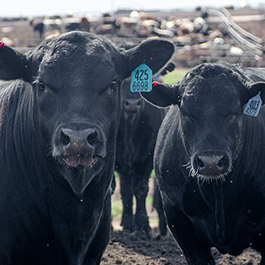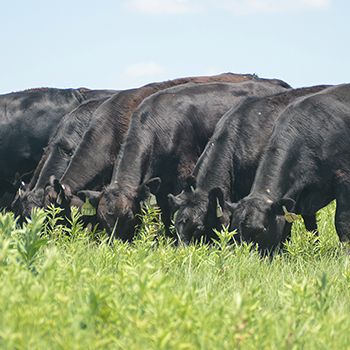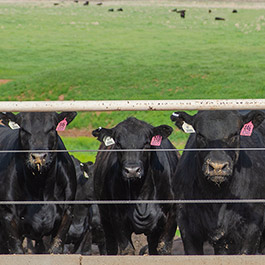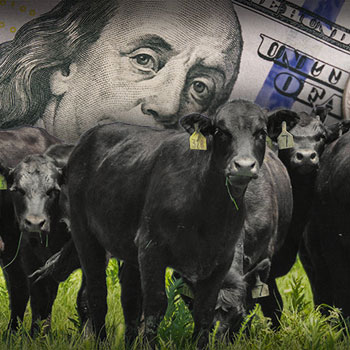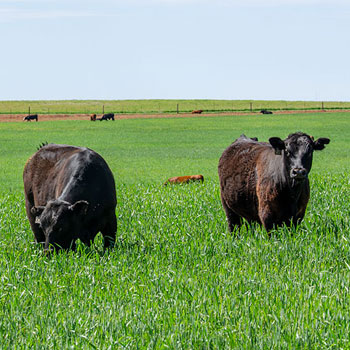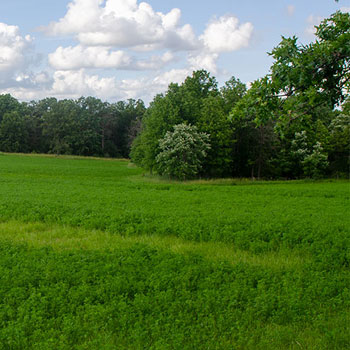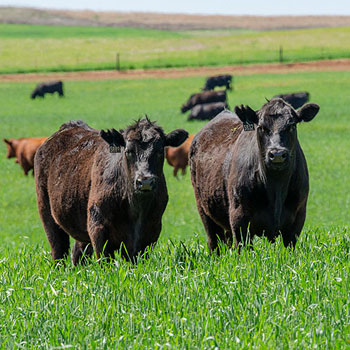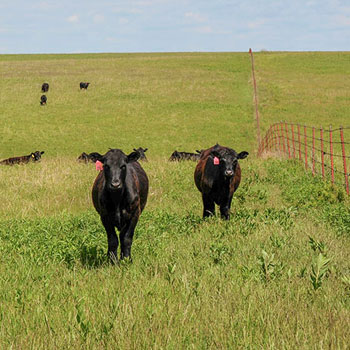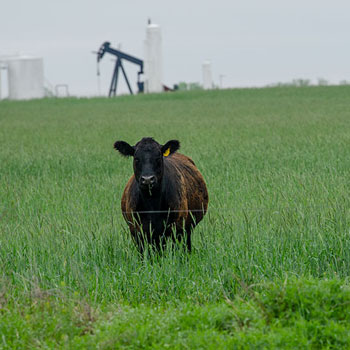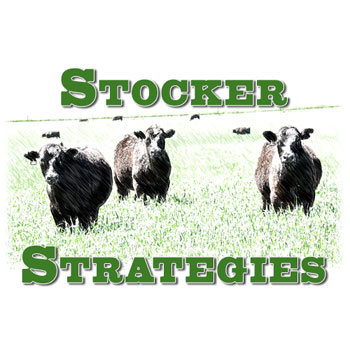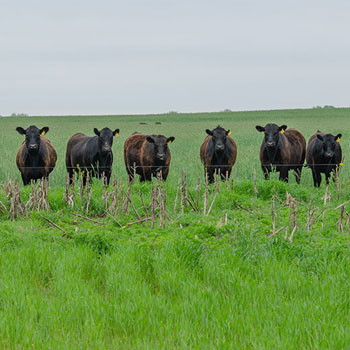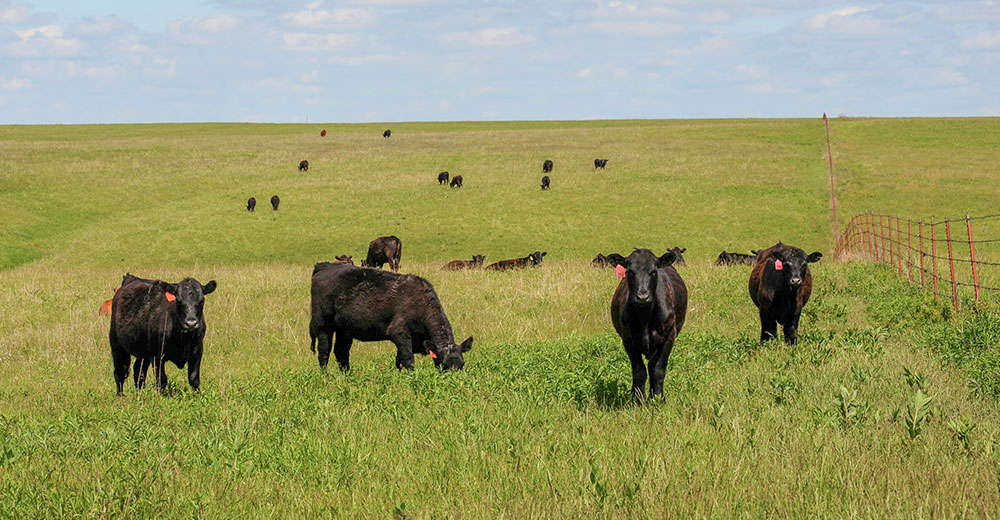
Welcome Reception
In Part 1 of this series, our authors focus on facility tips for receiving stocker cattle.
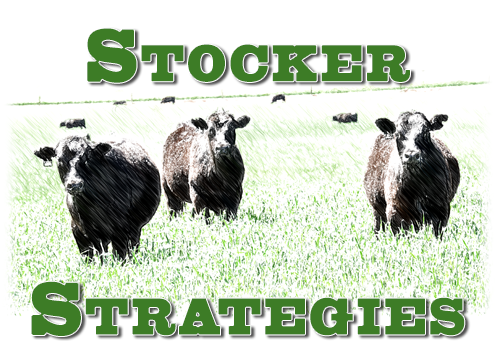
Stockering describes a management system that takes young, lightweight calves to a desired weight or adds weight to market cows and bulls. This is done primarily by using forage-based diets. After calves reach a desired weight or at the end of a grazing season, they are sorted into uniform groups and placed in feedyards or used as herd replacements. Market cows and bulls are often shipped to harvest after a stocker phase.
In general, most of the calves entering stocker programs are newly weaned, commingled with calves from many locations, deprived of feed and water for several days, and exposed to many diseases for the first time. Many bull calves are still intact, some calves still have horns and many incoming stocker calves have never received adequate vaccinations. Stocker calves must adapt to new and different diets, adjust to new surroundings, establish a new pecking order and get used to changing weather conditions.
Successful stocker operations have a plan that requires preparation before the cattle arrive. The receiving plan should include the following:
- well-designed facilities for ease of handling newly received cattle,
- a nutritional program to address the special needs of stressed cattle,
- a program designed to manage and care for sick or injured cattle, and
- personnel properly trained in identifying and handling sick cattle.
Receiving Facilities Designing and maintaining effective facilities is the first step in planning a successful calf-receiving program. Facilities should allow for a smooth, low-stress flow of cattle. Avoid square corners in facilities where cattle could crowd and injure one another. Curved lanes are more effective in moving cattle forward. When possible, include solid sides to fencing to minimize outside visual distractions to cattle. Design chutes to proper widths [28-30 inches (in.)] — not too narrow and not so wide that cattle can turn around.
Loading and unloading. Stocker operations must have effective means to load and unload cattle from trucks and trailers. Loading and unloading ramp heights differ, depending on the type of trailers used (see Table 1). Maintaining loading ramps of different heights or an adjustable-height loading ramp can facilitate a variety of calf transportation options. If tractor-trailers are to be unloaded, ramps should be single file (30 in. for mature cattle) to accommodate the 30-in.-wide rear doors standard on most U.S. tractor-trailers. Ramps can be narrowed to less than 30 in. when only calves will be handled. Make sure ramps are no wider than the trailer opening so cattle don’t strike the sides of the trailer during loading. Self-aligning dock bumpers and telescoping ramp panels are useful for blocking gaps from misaligned trucks.
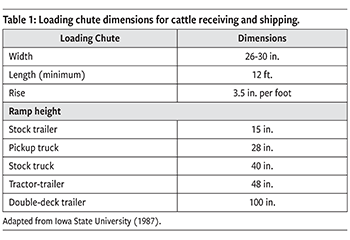 |
Cattle injuries can occur if unloading ramps are too steep. Target a loading ramp incline of 20° for a permanent ramp and 25° for an adjustable ramp. Grooved stair steps are recommended for concrete ramps. Plan for steps to be 4 in. high and 12 in. deep.
Provide cattle with adequate footing in loading areas, particularly on loading ramps. Smooth concrete allows cattle to slip and possibly sustain injury, so concrete flooring should be texturized to provide traction. When portable or adjustable ramps are used, make sure they are firmly secured. Movement or wobbling of the ramp can cause cattle to balk when they walk on it. Remove any sharp, protruding or distracting objects from the loading alleys that might injure cattle or cause them to balk during handling. Good drainage is also important, because it minimizes puddles and mud in receiving areas.
Sorting. From the unloading ramp, cattle will likely go directly to sorting pens for processing (unless they have traveled a long distance). More than one pen allows sorting into groups based on treatment needs, size, type and any other classification that might be needed. Each pen should be large enough to handle the expected number of cattle. However, if a pen is too large, cattle can get by the handler during sorting. Make sure to have enough gates properly placed relative to the alleys and other pens.
Moving cattle. After sorting, move cattle to the working area through an alley approximately 10-12 feet (ft.) wide. As with large pens, an alley that is too wide leaves the cattle room to go around the handler. If the alley is too narrow, it could force temperamental cattle to go over the handler. This alley should end into a crowding pen or crowding tub that funnels cattle into the working alley. A common alley is often used to move cattle to and from the working area, but a second alley may be useful when processing large numbers of cattle in a relatively short period of time.
The working alley, which leads to the squeeze chute or headgate, should be at least 20 ft. long to avoid delays in efficiently moving cattle. The width of this alley will vary, depending on the size of the cattle being processed. It should be wide enough for cattle to move forward without much resistance, but not wide enough for them to turn around. Eighteen in. is a good width for calves, but will not accommodate larger cattle. Some commercially available working alleys are adjustable. However, it might be more cost-effective to build a 22-in. to 26-in. wide working alley and hang spacers over the side when working smaller calves. As with the loading ramp, solid sides keep cattle moving forward without balking at motion or noises outside the chute.
The least expensive way to create a working area is to securely attach a headgate to the end of the working alley. This does not give much control over the calf as it is being processed. Commercial squeeze chutes effectively restrain cattle, improve processing efficiency and increase overall safety. One of the most important considerations in buying or building a working chute is the ability to give all injections in the neck. Make sure this can be done quickly and, most importantly, in a way that does not put the handler’s arm in danger of being injured.
Inspecting new cattle. Closely inspect calves upon arrival for overall health, condition and quality. Cattle often arrive or ship outside of daylight hours. Lighted facilities make cattle receiving inspection easier after dark. If calves are deemed unacceptable based on the transaction agreement, contact the seller to renegotiate the deal or to notify that the calves will be reloaded for return shipment.
Having a set of scales available in or near the receiving area is useful for determining cattle weights to calculate shrinkage upon arrival. Knowing shrinkage can help identify groups of cattle with potential health problems, because it can indicate the extent of marketing and shipping stress. Additionally, if weights of newly arrived cattle differ drastically from expectations, it may indicate how well the cattle were represented by the seller. Depending on how the cattle will be marketed at the end of the stockering phase, it might also be useful to have certified scales on-site. Scales are certified by the Weights and Measures Division of your state’s Department of Agriculture and Commerce.
Holding pens. Border holding pens with sturdy fences. Wood or metal pipe are good materials for building receiving-area fences. Fences should be at least 50 in. tall with posts set deep enough into the ground to withstand cattle’s crowding into the fence without the posts or fence moving.
Design and manage receiving pens to house cattle with plenty of space for each animal. Provide at least 14 square feet (sq. ft.) of pen space per head of calves and 20 sq. ft. of pen space per head of mature cattle. Provide adequate shade in receiving pens, particularly during warm, humid weather. Strategic placement of feed troughs and water tanks in receiving areas will be discussed in the nutritional management articles in future issues.
Communication. Gather contact information in advance for truckers who will haul cattle to the stocker operation. Being able to find out when a load of cattle will arrive lets the stocker operator make arrangements for personnel to be on-site at the receiving area to meet the truck upon arrival. Open lines of communication with cattle haulers may also be useful for fine-tuning directions to unloading facilities, and to determine if cattle loads are ahead or behind the scheduled arrival time. Observe cattle haulers and stocker operation personnel during cattle unloading, and be sure all cattle handlers practice good animal husbandry.
Receiving facilities are one component of a good plan for managing stocker cattle. Additional components include:
• a nutritional program to address the special needs of stressed cattle,
• a program designed to manage and care for sick or injured cattle, and
• personnel properly trained in identifying and handling sick cattle.
Watch future editions of the ABB EXTRA for additional articles in this series.
Editor’s note: This article is excerpted and reprinted with permission from Mississippi State University Extension publication number P2506: Stocker Cattle Receiving Management, which can be viewed in its entirety at https://extension.msstate.edu/sites/default/files/publications/p2506.pdf. Jane Parish is professor and head at the North Mississippi Research and Extension Center; Justin Rhinehart is a former assistant extension professor of animal and dairy sciences at Mississippi State University; and Richard Hopper is a professor of pathobiology and population medicine at Mississippi State.
